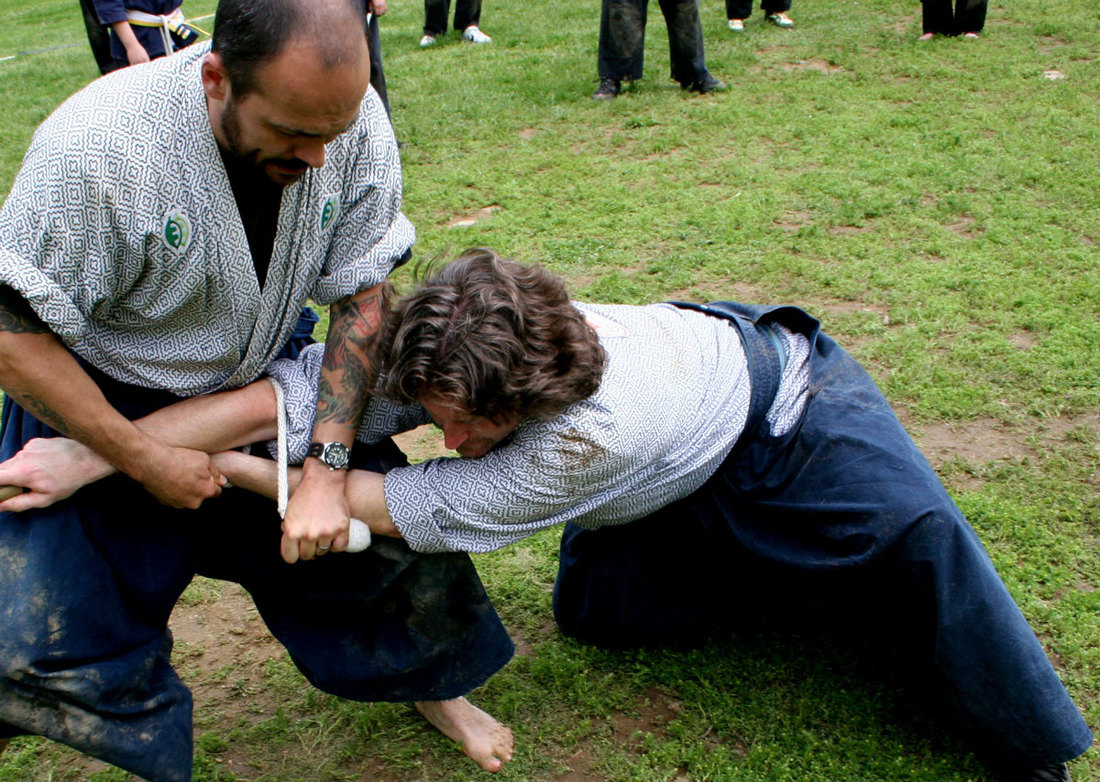A Brief History of the Kusari Fundo
Nov 04, 2016
The history of the kusarifundo is quite fascinating. The weapon was developed by the head sentry of Edo castle in the early eighteenth century to disarm and subdue criminals without bloodshed inside castle grounds.
The shedding of blood during this time would be considered disgraceful and therefore the arresting constables may see a punishment beyond that of the criminal arrested. As the use of the weapon became more popular, it was employed by Japanese police forces to defend against criminals of Samurai status.
Prior to the Tokugawa Shogunate, security forces employed the use of mitsu-dogu, to restrain a skilled criminal Samurai. These were three distinct long shafted pole-arms that proved highly effective to restrain the most hardened member of the warrior class turned criminal. These weapons included Sasumata, Tsukubo and the Sodegarami.
Draeger points out in Classical Bujutsu, “The general decline of the Tokugawa bushi’s martial skill may be clearly seen in the modifications of the mitsu-dogu, the three classical weapons used in concert for restraining swordsmen….In the Tokugawa period, these weapons became mere ornamental objects, few bushi knowing how to use them in combat.” Draeger goes on to state that these weapons were replaced by the jutte, bo and manriki-kusari, weapons that for the exception of the bo, required very close quarter engagement against a swordsman.
This he claims was not a testimony to the skill of the those using these weapons, but rather it is indicative of the lack of skill in the swordsman being apprehended. “The new restraining weapons… would not have proved effective against classical swordsman.”
Regarding the historical use of the Kusarifundo, mid Edo period is a time of importance. Many Samurai of the Tokugawa bakufu became criminal, and being allowed only by status to carry and wield a sword, it was necessary for police to be able to overcome them with precision and without the use of a blade. While many Samurai became police, the use of a sword was not allowed to anyone of non-Samurai class. Therefore, such weapons as the Jutte and Kusarifundo were trained, alongside the use of less effective polearms as the mitsu-dogu due to the nature the less effective opponent of the Tokugawa bakufu.

In 1600, Japan closed an era of constant civil war that had raged for centuries. As the Tokugawa Shogunate unified an extremely splintered county, the warring class lost their reason to exist. During early Edo (the new capital of Japan), the Samurai class were battle hardened, freshly coming out of the Warring States Period.
These true warriors would certainly be an extreme challenge for non-samurai security forces, should they decide to conduct themselves in a criminal manner. As time and generations passed, the war weathered Samurai were no longer. Between 1600 and 1638 only, the pre-Tokugawa warrior class had suffered the loss of hundreds of thousands of Samurai at the sieges of Sekigahara, Osaka Castle and the Shimabara Rebellion. Samurai now existed as a mark of status.


